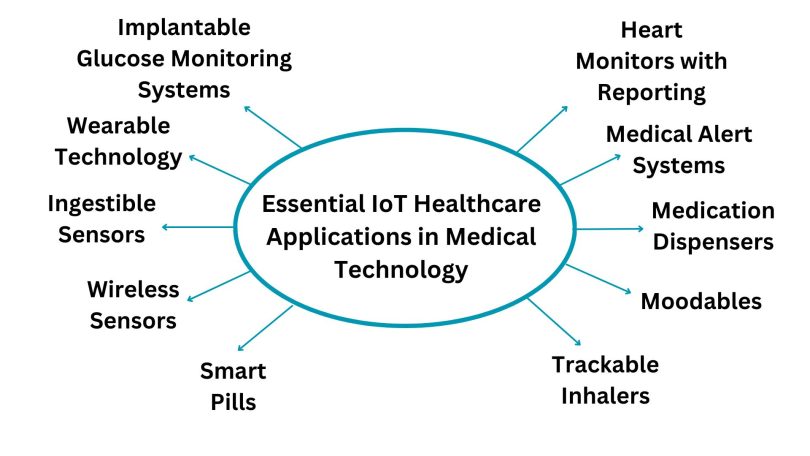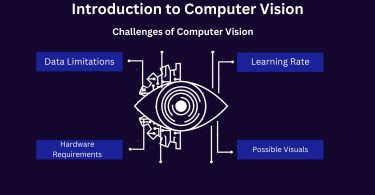The Internet of Things (IoT) came into the world as a groundbreaking technology roughly a decade ago, and the development of tech solutions and IoT devices for healthcare has been on the rise. IoT has now grown in various sectors of the economy such as retail, logistics, manufacturing, and oil sector.
But do you know about the Internet of Medical Things (IoMT)?
It is a known fact that medicine is an active science that always discovers new horizons, so it is not surprising that companies use IoT devices in healthcare to offer better solutions for doctors and patients.
Essential IoT Applications in Healthcare
Implantable Glucose Monitoring Systems
Type 2 diabetes patients can now have sensor-equipped devices placed just under their skin. These sensors send information to a patient’s mobile device, notifying a patient when glucose levels are too low, and keeping records of past data. This makes it possible for the patient to know when he or she is most likely to experience low glucose levels now and in the future.
Wearable Technology
The right cancer treatment is not only about weight and age but also about lifestyle and fitness levels as well. MOPs track a patient’s physical activity, level of exhaustion, hunger, and much more. Information gathered before and after the treatment assists the healthgivers in modifying the treatment process to fit the needs of the patient.
Heart Monitors with Reporting
Smartwatches that capture the heart rates and signs of high blood pressure make it easier for healthcare practitioners to get detailed reports during check-ups. These devices can also inform the medical staff of life-threatening situations such as arrhythmia, stroke or heart attack.
Medical Alert Systems
There are medical ID necklaces and bracelets that patients can wear in case they have an emergency; the ID informs the specific family members or friends.
Ingestible Sensors
It is now possible for a patient to take a pill-sized gadget with sensors, which transmits essential information to an application. These sensors assist in the prevention of some of the errors that are likely to occur due to human intervention such as the supervision of drugs at the wrong time or wrong dosage. Ingestible sensors are also being used to diagnose other illnesses like irritable bowel syndrome and colon cancer more effectively.
Medication Dispensers
Newer implantable devices can dispense medications at a steady and constant rate throughout the day. It reminds patients when it is time to take a refill and the doctors are informed of the missed doses during the follow-up visits.
Wireless Sensors
Wireless sensors are applied in refrigerators in hospitals and laboratories to measure the temperature of blood samples, medicines and other biomedical products to ensure that the stored conditions are appropriate.
Trackable Inhalers
Smart inhalers inform patients what might be causing their asthmatic experiences through data transferred to their mobile gadgets.
Wearables to Fight Depression
Technology is advancing day by day; Apple has created an application for people with manic depression. This app records episodes other than the scheduled visits and records the cognitive and mood functions to provide interventions.
Connected Contact Lenses
At present, connected contact lenses are employed to track the glucose level in diabetic patients. In the near future, these lenses will also be able to enhance vision and even fix the eye’s focus.
Location Services
IoT sensors can be affixed to such healthcare mobility devices as wheelchairs, weighing scales, defibrillators, nebulizers and health monitoring devices, to help healthcare personnel to track and locate the devices. This technology solves a major problem that is often witnessed in healthcare facilities namely loss of equipment (especially in case of any emergency in hospital).
Smart Pills
The combination of science fiction and medicine has given birth to ingestible sensors in the form of capsule like devices referred to as smart pills. These sensors give highly accurate diagnostic results by having to monitor internal body functions. Scientists have also incorporated synthetic bacteria into these capsules in order to help them diagnose gastrointestinal conditions more efficiently, thus, replacing conventional methods such as endoscopy.
Moodables
Other IoMT devices include smart patches like FeelZing that is changing the face of mental health by helping patients to regulate their moods and enhancing their cognitive abilities. Neurostimulation lets these devices enhance concentration, mood, and provide the user with a more relaxed mental condition.
These devices (modern technology) are changing the face of medical care through the integration of IoT into healthcare improving both efficacy and the quality of care for patients.
To sum up, the findings of this article (blog) further illustrate that IoT is transforming at a very fast pace in the healthcare sector and this results in altering the ways through which patients and healthcare practitioners engage with technology. From implantable glucose monitors to smart pills that diagnose gastrointestinal issues these are some of the innovative applications that are making health care to be more personalized, efficient and proactive. This kind of monitoring and diagnosing, treatment of ailments without physically touching the patient, and with real-time information available is a major revolution in the medical field.



